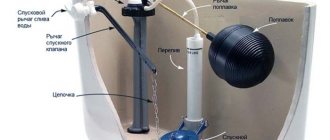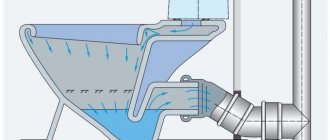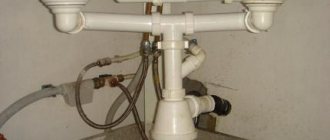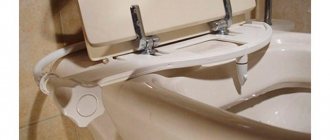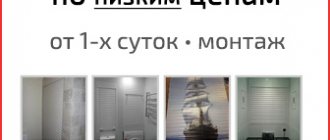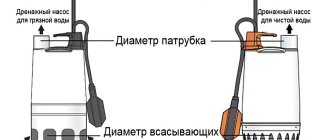The bathroom coil creates comfortable conditions for taking water procedures. It is necessary if a heating radiator is not provided here. This device has long been installed in apartment buildings. The heated towel rail heats the room and serves as a clothes dryer. The classic form is considered zigzag; these are the types of designs that can be found in old apartments. Now manufacturers offer a variety of shapes and sizes.
The coil can now be of any shape and size
Functionality. Application
Coil
The relevance and prevalence of the coil has increased quite recently and has rapidly captured the domestic market of plumbing fixtures. The remarkable efficiency of the heating element is justified by its compactness and heating efficiency. Bulky, heavy radiators are extremely impractical in a small bathroom. The following functional features of the coils ensure the popularity of the device.
The relevance of coils is justified by the increased humidity, which, in turn, provokes the development of mold. Modern lines of snake-like dryers have acquired new forms: ladder, drop.
Counteracting biological organisms
Conditions of high humidity inevitably provoke the formation of condensation, which, in turn, becomes an ideal environment for the development of fungi and mold. If you ignore the recommendations of specialists and do not clean the wall covering from condensation in a timely manner, a destructive effect is inevitable. Deformed walls, mold formation and the risk of infectious development. In addition, in damp conditions, a snake-like heater is an indispensable device in the bathroom.
Fountains and saucers in the corners
And yet, you can’t do without humidifying the air: even the best batteries will still dry it out.
There are many ways to do this, and you can often do without special equipment. Thus, indoor plants purify and humidify the air. But don’t think that a small violet can seriously increase the humidity in a large room. These should be large plants with large leaves, and there should be several of them in a large room. Aquariums with fish and indoor fountains and waterfalls can humidify the air. You can also place containers of water in the corners of the rooms. Saucers are best suited for this: from them, water evaporates faster, humidifying the air.
Photo: Shutterstock.com
Distribution of coils: types
The domestic and foreign market is filled with a sufficient number of heating coils. The main types of devices are:
- Water type heating. Coils mainly work in the cold season, as they are integrated into the central heating system.
- Electric type. The coil filler is oil or water. The advantage of the heater remains the ability to activate heating at any time.
- Combined type. Includes integration into the central heating system, as well as equipping with a fuel element. Of course, you can use it in the cold season.
Note: the cost of combined heated towel rails is significantly higher.
Before purchasing a coil, it is recommended that you familiarize yourself with the key features of your choice:
- During operation, it is necessary to pay attention to the pressure indicator in the central heating system. Otherwise, there is a danger of destruction of the coil structure with further failure.
- A special instruction table is supplied with any coil, which contains recommended heat output values.
Water coil
Water coil
The most common coil heater relevant on the market remains the water type. This is justified, first of all, by the market value of the device. The coil is directly connected to the central heating system, which means that during the warmer months the heater will not operate. It is noteworthy that the presence of autonomous heating in the house will allow you to judiciously use the heating capabilities of the apartment. The coil is heated by intensive circulation of hot water in the pipes.
However, a negative point in the operation of water coils remains the risk of pipe clogging. The most common root causes of this are:
- Water quality. Low-quality water in the heating system inevitably leads to clogged pipes.
- Presence of scale. In this case, third-party objects lead to disruption of water circulation.
- Air. So-called air locks require regular cleaning of the coil. It is noteworthy that for this it is better to use the services of a specialist.
Note: the durability of the coils is quite indicative: the average service life of a coil heater is from 7 to 8 years.
An additional and significant problem in the operation of a water-type coil will be the danger of complete clogging, which requires a comprehensive replacement of the coil.
Electric coil
Electric coil
The classic heater option in a modern bathroom is the electric coil. The advantageous aspect of this type of coil remains autonomy in operation and practicality in installation. So, regardless of the location of the heating communication, only a socket is required for the operation of an electrical appliance. Water or high-quality oil is used as filler for the electric coil. After activating the device, the coil will reach the desired temperature in a short time.
It is noteworthy that the amount of electricity consumed does not exceed 100 W per month. Consequently, complex heating of a bathroom will cost a month of using a regular 100 W lighting lamp.
However, before purchasing a device, be sure to study the indicated power, as well as the presence of a temperature control toggle switch. It is better to entrust the installation of the coil to a professional, since the bathroom is an environment of high humidity, where the conductivity of electricity is slightly increased.
Combined coil
The prerogative of this type of heater remains the possibility of universal use of the coil both in summer and during the heating season. In this way, the accumulation of excess moisture during the transition period can be avoided.
The ergonomics of the coil are obvious - energy savings during the heating season. However, the market value of the heater significantly exceeds the cost of analogues. In addition, the installation process requires the intervention of a specialist due to the fact that the coil needs to be connected to the central heating system. Also, you need to make sure that there is an additional power source - an outlet.
The correct location of the heater is fraught with practicality and ease of use.
Installation
Coils powered by water supply are mounted using metal fittings, the size of which is selected in accordance with the diameter of the pipes of the product.
Sometimes welding work is required.
When purchasing this design, select the correct size of the product to avoid unnecessary hassle with installation.
Bathroom water coils require shutting off the water throughout the entire riser.
Don't forget to install ball valves to shut off the water. Fastenings (hinges) are also required for durable installation.
Electric heated towel rails are very easy to install yourself. You need to choose a place and mount it using special fasteners that come with the kit.
It is better to install by level to avoid distortions. In case of tiled walls, use special drills.
When the holes for the fasteners are ready, dowels are driven into them. The coil is installed and secured with locking screws.
To install a combined coil, you should call a specialist.
Features of choice. Device material
Stainless steel coil
The features of the heating process are quite similar, although the material of the coils is significantly different.
The domestic market is filled with heaters consisting of the following materials:
- Stainless steel. The most versatile, durable and practical option. However, stainless steel is extremely labile to low-quality heating water. High-quality coils are predominantly coated with durable paint materials such as chrome, waterproof compounds and polish. By the way, painted coils are cheaper, however, the paint coating quickly becomes unusable.
- Dark steel. The so-called black steel is in most cases covered with an additional protective layer. The inner walls of the coil contain a comprehensive anti-corrosion coating, which prevents early malfunction of the device.
- Non-ferrous materials – metals. The prerogative in this type of materials is brass and copper, which are characterized by a high degree of heat transfer. However, a limited service life negatively affects the popularity of the product on the market. Coils on non-ferrous metal are characterized by aesthetic beauty.
Note: Do not under any circumstances purchase a coil that is low in cost. Most likely, the heater uses fake or low-quality stainless steel.
No water - no heat
The fifth significant drawback is interruptions in the supply of hot water. They occur at least once a year, but in practice this happens much more often.
Even if you have a private house with a gas heating boiler, then there is no point in having a water heated towel rail. Few people would think of running a boiler in the summer because of one small coil. It is cheaper to adapt a boiler for this purpose.
The sixth problem, on the contrary, is related to not turning off the water. If in the summer heat the hot water is not turned off, and your coil has a decent area and is connected directly without valves, such a thing can raise the temperature in a small bathroom over 40 degrees!
On the contrary, we will have to wrap up the pipes and somehow plug up this extra heat source.
Seventh, periodic water outages, in addition to inconvenience, lead to more serious consequences. The metal from which the heated towel rail is made heats up and contracts depending on its temperature.
The same thing happens with all threaded connections. And the more often your hot water is turned off, the sooner you expect a leak.
And if you have metal-polypropylene joints, then due to different expansion coefficients, you will see a leak even earlier.
In addition, models of complex shapes have a large number of welds. And they are also a potential site of damage.
Acquisition relevance pledge
When choosing a quality coil, pay attention to the following parameters:
- Features of the bathroom. It is worth considering the fact of accessibility and proximity of heating communications, as well as a source of electricity.
- Heating coil material. Rely on the material's anti-corrosion properties as well as its durable ability to resist chemical additives in your heating water.
- The size of the heating coil plays a priority role in the installation process. An oversized device will most likely place additional stress on the wall covering. In addition, the diameter of the central heating system pipes should be taken into account.
- Bathroom style. The domestic market contains a huge number of different coils, differing in color, material and design features.
- Availability of technical documentation. Be sure to request the coil's passport.
Choosing a high-quality and efficient heating coil will provide your bathroom with a comfortable air temperature.
No. 10 Incorrect placement of the radiator
Equally important is the correct placement of the battery in relation to the wall. It is often placed under the windows, because it is through them that the greatest amount of heat escapes
They make mistakes when setting the depth of the device when it is either close to the wall or too far from it. The optimal distance is 2 cm.
You also need to pay attention to the height setting. If the radiator in the apartment is too close to the floor, this leads to poor heat transfer and air circulation.
You should retreat 6-10 cm from the floor. Excessively high placement of the device is also not allowed, especially with a window sill hanging over it. The consequences will be the same as with low placement. You need to leave at least 5-10 cm to the bottom line of the window sill.
The worst thing is to install heating devices inside niches and cover them with a decorative grille or screen. The air flow will decrease by 2-3 times, which will make the room noticeably colder. In order not to spoil the interior, it is better to resort to other methods of camouflage, for example, hanging curtains on the floor.
If you avoid the listed mistakes, the installation of a radiator in your apartment will go off without a hitch, and the result will delight the residents for many years.
Current rules for installing a coil
If you install the heating coil yourself, make sure you have the following set of tools:
- A powerful hammer drill or a modern impact drill.
- Screwdriver.
- Fastening elements.
- Construction ruler and level for measuring indicators.
To connect the central heating system and the coil you will need a high-quality coupling. However, the negative aspect of using a classic coupling is the impossibility of quick dismantling. Purchasing “American women” will allow you to instantly install or remove the connecting element.
Electric heating coils remain the simplest and most practical to install, requiring only installation and direct connection to the electrical network. It is noteworthy that if you are replacing a pre-existing coil, you can use the old fasteners. As a source of electricity, it is worth taking care to completely protect the outlet from moisture. The bathroom is an environment of high electrical conductivity.
Connecting an electric heated towel rail
A very important point for electric models is the correct connection to the 220V network. They should only “sit down” on the line with the RCD and be sure to be grounded.
Grounding in most models is connected in the same place as the power wires.
This does not spoil the appearance and design, but at the same time provides protection.
For this reason, make sure that the plug and socket have the appropriate grounding contacts.
Even if a washing machine produces an electric current, what can we say about a metal thing with an electric cable or heating element running inside it.
In the event of an insulation breakdown and the absence of normal differential protection with a grounding loop, it will be a potential killer, patiently waiting for the moment when you deign to throw a damp towel over it with wet hands.
By the way, grounding pipes is a prerequisite for plumbing devices. Firstly, it helps against corrosion. Secondly, a water coil, just like a water tap, can give you an electric shock, even if the leak is not in your apartment, but in your neighbors.
Read more about this in the article below.

